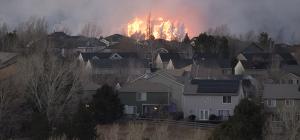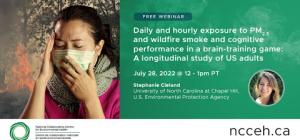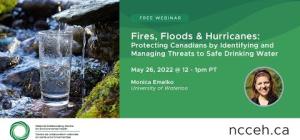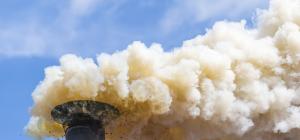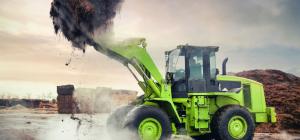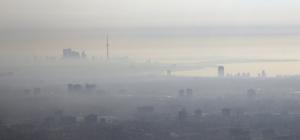
Table of Contents
Wildfire smoke and health
Image

The frequency and intensity of Canadian wildfires is increasing due to the changing global climate, as well as long-standing forest management practices. Ever-worsening fire seasons impact communities in a variety of ways, including through smoke exposure and the threat of property damage, evacuation, and loss of life. The resources assembled here are intended to assist public health practitioners, decision-makers, and the public by providing guidance regarding public health impacts, community preparedness, risk communication and response to wildfires and wildfire smoke.
You can also find additional emergency preparedness resources on our other topic pages:
- COVID-19 Management during Public Health Emergencies
- Oil Spills
- Floods: Prevention, preparedness, response and recovery
- Indigenous Disaster Response
- Psychosocial impacts: Resources for mitigation, response and recovery
- Extreme Heat
Mitigating wildfire and smoke risks
- FireSmart Canada(Partners in Protection, 2021) UPDATED
This webpage is an essential resource for communities and citizens wishing to make their communities FireSmart. Resources include manuals, articles, online courses, in-person workshops, and case studies of FireSmart Neighbourhoods across Canada. Many resources are available in both official languages.
- Wildfire management in Canada: Review, challenges, and opportunities (Tymstra et al., Jan 2020) NEW
This peer-reviewed article takes a broad view of wildfire management in Canada, providing important perspectives regarding the need to protect public health and safety while recognizing that current strategies are insufficient.
- FireSmart BC homeowner’s manual (FireSmart BC, Sept 2019) NEW
This excellent illustrated guidebook instructs individual homeowners on how to dramatically reduce the risk that a wildfire will spread within the property.
- FireSmart guidebook for community protection(Government of Alberta, 2013)
This streamlined FireSmart toolkit provides essential background information, templates, and tools to help communities develop a wildfire response plan, based on local wildfire risk, based on topography, fuel types, and other factors. Communication strategies used in the guide are discussed in this peer-reviewed article.
Preparedness and response planning
- Prepare for the worst: Learning to live with wildfire smoke (Henderson, June 2021) NEW
This webinar provides an overview of the worsening fire risks in western Canada and demonstrates the almost immediate public health impacts of smoke exposure to the community. The presentation also covers some of the tools and strategies that can be used to reduce health impacts and achieve the necessary state of preparedness for a smokier future.
- Planning framework for protecting commercial building occupants from smoke during wildfire events (ASHRAE, June 2021) NEW
This guidance document provides detailed information on heating, ventilation, and air conditioning (HVAC) and other building measures to protect occupants against smoke exposure, while also accounting for potential SARS-CoV-2 transmission. The document outlines how to develop, implement and evaluate a smoke readiness plan, with numerous additional linked resources.
- BC Health and Smoke Exposure (HASE) coordination committee guideline (BC Centre for Disease Control, May 2021) UPDATED
The purpose of this advisory documentis to describe the powers and legislation that can be applied by decision-makers when taking measures, including evacuation, to minimize the public health impacts of wildfire smoke. It describes the activation, coordination and response to wildfire smoke, and the process for assessing outcomes and making recommendations to protect public health interventions. Although specific to BC, this may be useful to policy makers in other jurisdictions.
- Wildfire smoke: a guide for public health officials(US Environmental Protection Agency, Aug 2019)
This guide is designed to help public health officials prepare for smoke events, take measures to protect the public, and communicate with the public about wildfire smoke and health.
- Forest fires: a clinician primer(Nsoh et al., July 2016)
This article succinctly reviews populations most at risk during fire events, tools for situational awareness (e.g., smoke forecasting and environmental monitoring), and steps that can be taken to protect patients.
- Guidance for BC public health decision makers during wildfire smoke events(BC Centre for Disease Control, Sept 2014)
This advisory document provides public health decision makers with current evidence and BC-specific guidance for the assessment of, preparation, and possible interventions for a wildfire smoke event.
Occupational health: protecting outdoor workers and wildland firefighters
- Review of the mental health effects of wildfire smoke, solastalgia, and non-traditional firefights (Esienman et al. March 2021) NEW
This evidence review looks at mental health impacts of fire generally, with an additional focus on solastalgia (the traumatic effect of witnessing landscape transformation or degradation) and its impacts on untrained firefighters, such as residents who stay behind and prison inmates who volunteer.
- Working in smoke: Wildfire impacts on the health of firefighters and outdoor workers and mitigation strategies (Navarro, Dec 2020) NEW
This peer-reviewed article describes the conditions to which firefighters are exposed and their potential health impacts, along with some risk-mitigating and risk-enhancing situations of which clinicians may need to be aware.
- Fighting wildfires (National Institute for Occupational Safety and Health, Nov 2020) NEW
This webpage provides a comprehensive overview of the occupational health risks experienced by wildland fire fighters and other outdoor workers exposed to smoke. A narrative review of this information can be found here.
- Wildfire smoke: frequently asked questions(WorkSafe BC, July 2017)
This factsheet provides employers with information on the health hazards of wildfire smoke and measures that can be taken to minimize the effects on workers.
- Fighting with fire: how bushfire suppression can impact on fire fighters’ health(Aisbett, Dec 2007)
This article provides information for health practitioners on the health impacts of wildfire smoke on firefighters, tips to be aware of when assessing firefighter health, and recommendations for preparing firefighter patients before bushfire season.
Public health impacts and interventions
- FireSmoke Canada(BlueSky Canada, 2021) UPDATED
This webpage provides services and data on air quality and health & safety for emergency management professionals, researchers, and the public by using the BlueSky Canada forecasting system to report hourly concentrations of smoke particles (PM5) from wildfires up to 48 hours in advance.
- BC Air Quality website(Government of British Columbia, 2021) UPDATED
This webpage gives information about air pollution, how BC measures and monitors air quality, and gives tools to access air quality advisories, air quality data, and the Air Quality health Index.
- Home-made box fan air filters (BCCDC, May 2021) NEW
This factsheet provides information on several methods to build a moderately effective DIY air cleaner intended for use in a smoke emergency.
- Can public spaces effectively be used as cleaner indoor air shelters during extreme smoke events (Wheeler et al., Apr 2021) NEW
This peer-reviewed article demonstrates how effective a properly configured cleaner air shelter can be, even during a severe smoke event.
- Respiratory impacts of wildland fire smoke: Future challenges and policy opportunities (Rice et al., Feb 2021) NEW
This synopsis of an American Thoracic Society workshop convened in 2019 provides perspectives from a multidisciplinary group of wildfire experts on the key knowns and unknowns of the public health consequences of wildfire events and how to respond to them.
- Guidance for cleaner air spaces during wildfire smoke events (Health Canada, Sept 2020) NEW
This guidance document outlines how to create protected “cleaner air” spaces, for public or private use, during smoke events.
- Public Health Planning for Wildfire Smoke(Maguet, Aug 2019)
This report, which is a follow-up to Maguet (2018) cited below, describes a multi-jurisdictional qualitative inquiry into current public health planning for wildfire smoke events. It also addresses the capacity to respond to wildfire smoke events and perceptions of wildfire smoke as a public health priority.
- Public health responses to wildfire smoke events(Maguet, Aug 2018)
This Health Canada-funded project examines public health preparedness and response to wildfire smoke events in four Canadian jurisdictions, with the aim of understanding practitioners’ needs and challenges. The report provides insight into where future inquiry and capacity development might be warranted and builds on the experiences of public health practitioners to consolidate learning in this field.
- Portable air cleaners should be at the forefront of the public health response to landscape fire smoke(Barn et al., Nov 2016)
This evidence review assesses the usage of portable air cleaners and the level to which the information provided by public health authorities corresponds with recommended usage, advocating for their use in response to smoke from wildfires.
- Home and community clean air shelters to protect public health during wildfire smoke events(BC Centre for Disease Control, Mar 2014)
This evidence review outlines the state of knowledge on the use of portable air cleaners, larger scale air conditioning and considerations for the implementation of community and home clean air shelters.
- Using masks to protect public health during wildfire smoke events(BC Centre for Disease Control, Mar 2014)
This evidence review clarifies types of respiratory protection that can be used by the public, what air toxins they can protect against, and addresses the effectiveness and efficacy of these devices. When communicating with the public, this recently updated factsheet on how to use a mask properly can be printed or distributed electronically.
Communicating with the public
- Wildfire Smoke Factsheets(BCCDC, 2021) UPDATED
This webpage host a number of short, printable fact sheets that can be used to communicate with the public regarding wildfire smoke health risks, preparedness, portable air cleaners, outdoor exercise, understanding the Air Quality Health Index, and the use of face masks.
- Effectiveness of public health messaging and communication channels during smoke events: a rapid systemic review(Fish et al., May 2017)
This systematic review investigates the effectiveness of various communication channels for public health messaging during smoke events and their effectiveness at reaching general and more vulnerable populations.
Lessons learned
- Addressing the new normal: 21stcentury disaster management in British Columbia (BC Flood and Wildfire Review, Apr 2018)
This report examines and assesses government response to the flood and wildfire events of the 2017 season. The review incorporates consultations with individuals, Indigenous and non-Indigenous communities, as well as organizations and other stakeholders to gain a wide cross-section of perspectives from those affected.
- September 2017 Kenow fire – Post incident assessment – Common themes analysis(Government of Alberta, Sept 2018)
This report identifies and addresses common themes experienced by stakeholders from the 2017 Kenow fire. The recommendations are meant to assist in improving Alberta’s emergency management system and strengthen relationships between the Government of Alberta and other actors when reacting to these types of complex incidents in the future.
- The Last Stand: Evacuating a Hospital in the Middle of a Wildfire (ASPR TRACIE, 2018)
This report provides a first-hand account of the evacuation of Kaiser Hospital, in Santa Rosa, California, during the 2017 wildfire season. The interviewees provide valuable insight into the complexity of such an evacuation, and how it differed from prior emergency response scenarios.
- May 2016 Wood Buffalo wildfire post-incident assessment report(KPMG, May 2017)
This report highlights successful practices and lessons learn by the province of Alberta and its partners regarding the preparedness for and response to the Wood Buffalo fires.
Indigenous and remote communities
- Revitalizing traditional fire management in Tsilhqot’in territory (Gathering Voices Society, 2021) NEW
This webpage and attached summary detail a ground-breaking project to recover and integrate traditional Indigenous fire-keeping knowledge with Western forest management practices to reduce the risk of catastrophic wildfires.
- From the ashes: reimagining fire safety and emergency management in Indigenous communities(Report of the Standing Committee on Indigenous and Northern Affairs, June 2018)
This report summarizes findings from a study on the response and long-term impacts of the 2017 summer wildfires in First Nation communities. The report also addresses fire safety on reserves, resources, tools, and training needs, and the significant gaps in the current approach to emergency management in First Nation communities. Recommendations coming out of the study are also included and focus on fire safety, prevention, funding, fire protection standards, and data collection.
- Guidelines for health staff in Northern Saskatchewan communities preparation for forest fires and the assessment of health effects from forest fire smoke(Pacific NorthWest Border Health Alliance, 2013)
This guide is designed to help public health officials in Northern Communities prepare for smoke events, take measures to protect the public, and communicate with the public about wildfire smoke and health, including communication fact sheets.
- Lived experience of a record wildfire season in NWT(Dodd et al. June 2017)
This article examines the 2014 wildfire season in the Northwest Territories (NWT), in which community members describe their mental, emotional and physical experiences of evacuation and prolonged fire smoke exposure.
Returning home after a disaster
- Alberta Health Services: Wildfire resources(Government of Alberta, 2021) UPDATED
This webpage provides resources to the public on mental health supports, health care services, and information about restoring and preparing homes for reoccupation. Alberta Health Services also provides a guide for reopening food establishments following a wildfire.
- Health and safety around fire retardants/suppressants(BC Centre for Disease Control, 2017)
This document helps returning residents to identify the presence of Phos-Chek and Thermo-gel fire retardant/suppressants on their property, and indicates whether garden produce coated in these substances can be safely consumed.
- Longitudinal community assessment for public health emergency response to wildfire, Bastrop County, Texas(Kirsch et al., Mar 2016)
This article investigated the effectiveness of public health and community response to wildfire smoke immediately and 3.5 years after a 34,064 acre wildfire.
- Prevalence rates and predictors of generalized anxiety disorder symptoms in residents of Fort McMurray six months after a wildfire(Agyapong et al., July 2018)
This academic article examines the prevalence and risk factors of generalized anxiety disorder symptomology in residents of Fort McMurray six months after the wildfire. Significant predictors included witnessing of homes being destroyed by the wildfire, living in a different home after the wildfire, and receiving limited governmental support. The study extends the literature on mental health conditions and risk factors following disasters.
- After the fire: the mental health consequences of fire disasters(Laugharne, Jan 2011)
This evidence review examines the psychosocial effects of wildfires on responders and community members, as well as highlighting groups most at risk for psychological trauma.

